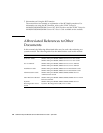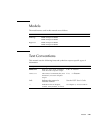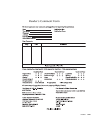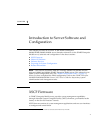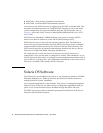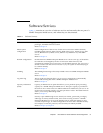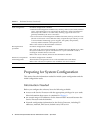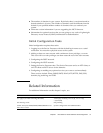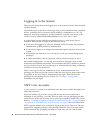
2 SPARC Enterprise Mx000 Servers Administration Guide • April 2007
■ XSCF Web, a browser-based graphical user interface
■ XSCF Shell, a terminal-based command-line interface
You can access the XSCF firmware by logging in to the XSCF command shell. This
document includes instructions for using the XSCF interface as part of the initial
system configuration. For more information about the XSCF firmware, refer to
Chapter 2 and to the SPARC Enterprise M4000/M5000/M8000/M9000 Servers XSCF
User’s Guide.
XSCF firmware, OpenBoot™ PROM firmware, and power-on self-test (POST)
firmware are known collectively as the XSCF Control Package (XCP).
XSCF firmware has two networks for internal communication. The Domain to
Service Processor Communications Protocol (DSCP) network provides an internal
communication link between the Service Processor and the Solaris domains. The
XSCF network provides an internal communication link between the two Service
Processors in a high-end SPARC Enterprise Mx000 server.
On a high-end server with two Service Processors, one Service Processor is
configured as active and the other is configured as standby. This redundancy of two
Service Processors allows them to exchange system management information and, in
case of failover, to change roles. All configuration information on the active Service
Processor is available to the standby Service Processor.
Solaris OS Software
The Solaris OS is pre-installed at the factory on one domain by default in a SPARC
Enterprise Mx000 server. Within its domain, the Solaris OS includes features to
manage Solaris OS system capabilities.
You can install applications on the domains. That process is managed through the
Solaris OS tools. Likewise, any other software management applications that you
prefer to use on the domains must be installed through the Solaris OS tools.
The DSCP network provides an internal communication link between the Service
Processor and the Solaris domains.



